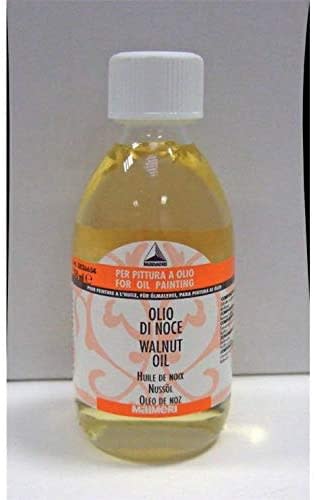The Best Walnut Oils for Your Painting Projects

If you love how linseed oil makes your paints flow but aren’t keen on how it yellows over time, you might want to replace it with walnut oil. While typically more expensive and slower to dry, walnut oil has less of a tendency to yellow—which means you can use it with light colors without worry. It also has virtually no odor, and it thins paints while blending masterfully with them so their values remain unaltered. You can count among its fans Renaissance masters such as Leonardo da Vinci and Giorgio Vasari. Ready to explore the magic of walnut oil yourself? Check out our picks below.
Brought to you by the oldest and most widely circulated art magazine in the world, ARTnews Recommends helps you make the choice that suits you best from products in hundreds of art and craft supply categories. Our offerings are based on intensive research, interviews with artists and craftspeople, and the accumulated experience of the site’s editors and writers. We provide trustworthy and helpful advice about materials to artists ranging from beginner to professional.
More from ARTnews.com
Pace Gallery Takes on Virginia Jaramillo, Abstract Painter Whose Work Has Recently Seen a Resurgence
1. Maimeri Walnut Oil
The Maimeri factory was established in Italy in 1923 as one of the earliest of its kind, specializing in artists’ paints and varnishes. Its founders were two brothers—a painter and a chemical engineer—who took great care in developing products that were superior to the competition’s. Nearly a century later, their walnut oil remains one of the best available. Use the nearly clear liquid to add luster and fluidity to your paints, or add a few drops to slow their drying time while helping them resist yellowing as they age.

2. M. Graham Walnut Oil
This is a very high-quality oil priced much lower than its traditional Italian counterparts. Made in the United States, this alkali-refined oil helps pigment glide smoothly across canvas while slowing the drying time, and it resists yellowing. It is sold in an eight-ounce bottle.

3. Ferrario Artist Walnut Oil
Also made in Italy, this walnut oil has been exposed to sunlight to improve its drying properties and transparency. It’s slightly more viscous than our top pick, but it offers near-equal results. A little goes a long way in increasing the brightness of colors while keeping oil paints free-flowing and workable for a longer time.

Buy: Ferrario Artist Walnut Oil
4. Natural Earth Paint Refined Walnut Oil
If you’re the sort of painter who likes to mill your own pigments, consider picking up this bottle of refined walnut oil. Developed by the family-owned, eco-conscious company Natural Earth Paint, it’s intended for use with dry-earth pigments; simply add a couple of drops of walnut oil to a tablespoon or two of pigment and mix with a palette knife or glass muller. The results flow beautifully and bring out the color of natural pigments. The product, made with American-grown walnuts, has been hand-bottled in a solar-powered warehouse for maximum quality control and is produced through a totally nontoxic and green process.

Buy: Natural Earth Paint Refined Walnut Oil
5. Chelsea Classical Studio Walnut Oil
For the top-performing walnut oil with the dreamiest consistency, we recommend this option from Chelsea Classical Studio. The medium appears practically clear thanks to a rigorous manufacturing and cleansing process: After being extracted and formulated according to traditional recipes and techniques, the oil undergoes multiple hand-purification steps to filter out unwanted elements and remove mucilage and fat. The results have unparalleled drying and archival properties, extend the colors of paints, and make pigments flow without being too slippery.

Buy: Chelsea Classical Studio Walnut Oil
Best of ARTnews.com

